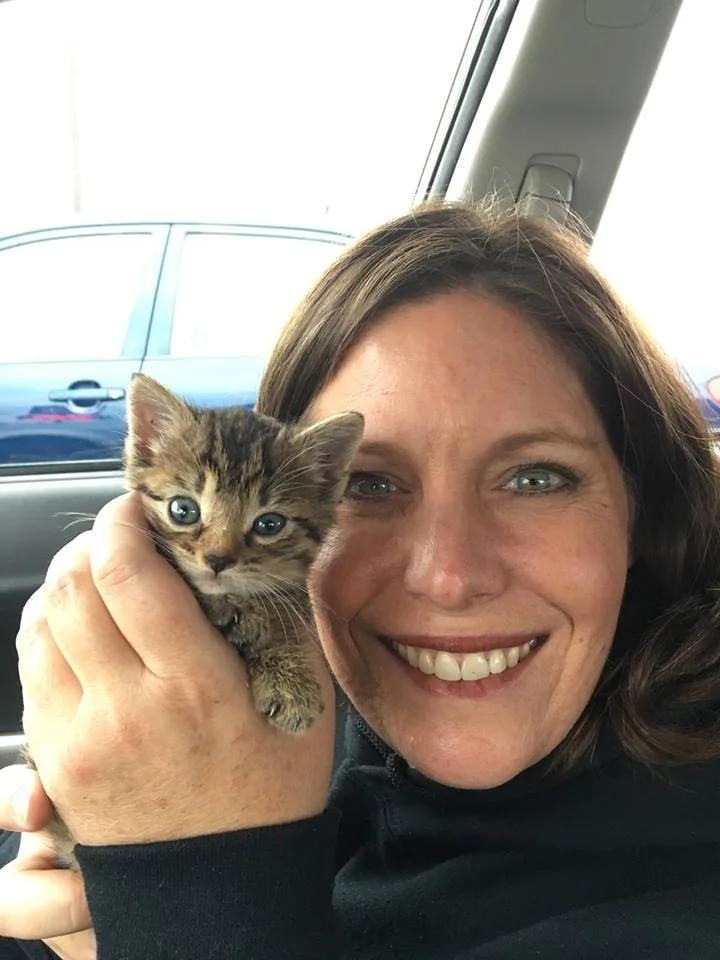Linda Seiler
“Counseling opened up a new world of self-understanding, emotional healing, and self-discovery. The life-dominating struggle of gender dysphoria and same-sex sexual feelings has faded, and today these are no longer a struggle.”
When I was born, my mother was conflicted about having a daughter instead of a son. As a young child, my mom’s unspoken desire influenced my life, and my mother and I never fully connected emotionally. I remember feeling frustrated by her expectations while at the same time longing for her affection and attention. My mother loved me deeply, but I interpreted our disconnect as rejection, which heightened my attention toward my father. He offered safety and stability, and I desired to be like him growing up. Yet, he was not consistently emotionally available and could not fill this void. I desperately longed for a deeper connection with my mom and, when I could not create it, rejected her as a defense to protect my heart. As I grew older, I attempted to replace my need for her nurture through sexual fantasies and connections with women—a twisted and confused tether to female intimacy. Most devastating, my rejection of her grew into a rejection of myself.
I grew up feeling emotionally abandoned, leaving me vulnerable and in need. So when a female junior high teacher showed inappropriate interest, I became fixated on her. What should have been a student-teacher relationship became something wholly different. She shared with me things that were not appropriate and planted seeds of confusion in my heart and mind.
Childhood sexual abuse greatly impacted my view of my sexuality and how I perceived the sexuality of others. Some friends introduced me to pornography in grade school, which awakened in me desire and intrigue. However, I wanted to be the man, not the woman, in what I saw portrayed in pornography. In 4th grade, I heard about “sex change” operations (now called “gender confirmation surgeries”). That’s the answer to my dilemma, I thought. I believed changing my gender would give me freedom and decided when I had the means to become a boy, I would change my name to David and live happily ever after.
Hitting puberty in junior high was devastating. I despised my changing body. Not only did I want to be male, but I began to develop jealousy of my male peers. Their voices were changing, and their male characteristics were becoming more defined. In addition, around this time, I was becoming increasingly attracted to women. This affirmed my belief that I truly was a male trapped in a female body, but it was a helpless feeling I couldn’t control and didn’t want.
I tried to rationalize my life by myself and kept these feelings hidden from my parents and others. Fear of telling my family and the drama of coming out were the biggest hindrances to telling the truth about what I was feeling. I didn’t know how to communicate, and sharing with people, especially my family, felt impossible. This looming secrecy felt like rejection. I knew I would be lonely and isolated living the life I wanted without my family and friends around me. So I decided not to have the operation and tried my best to fit in. Resigned to living a miserable life of incongruency with my gender, I thought depression and suicidal feelings were my lot.
Taking cues from my sister on how to be a girl, I hoped growing my hair out and experimenting sexually with boys would cure my confusion. The opposite happened, and I became intensely jealous, wanting to be the guy with the girl, not the girl with the guy. When I received Christ late in high school, I thought all my feelings of wanting to live a different life would disappear. Sadly, this didn’t happen. My double life persisted, faking it until I partially made it, until I confided in a pastor whose kindness and sensitivity pointed me to counseling. Counseling opened up a new world of self-understanding, emotional healing, and self-discovery. The life-dominating struggle of gender dysphoria and same-sex sexual feelings has faded, and today these are no longer a struggle.
My childhood detachment from mom created a deep longing for a female connection. Eventually, I realized that my attraction to female affection was rooted in my desire to be genuinely connected to her. To satisfy the need for an intimate connection to femininity, I sexualized relationships with women. I saw the admirable qualities in them that I felt inadequate in or incapable of. Engaging physically and sexually with women was the only way I could see myself attaining those attributes. I was blind to the beauty of who I was and the characteristics about me that were worth loving and cherishing. I saw lack and thought finding someone with what I needed and wanted would make me whole.
There had been a deep wound of rejection of myself that I carried. I didn’t feel comfortable in my gender and therefore rejected it. I hated my own body and couldn’t embrace femininity as my own. My self-perception of my own gender was that the deficiencies greatly outweighed the good. I wasn’t feminine. I wasn’t a girl. I desired to express my femininity in strength and confidence but felt less capable.
I started to see that my attractions became the breadcrumbs to a wound on the inside. I wanted to connect with feminine love. This was the place I longed desperately to share with my mother. Eventually, my faith enabled me to face this need. I met mature women whom God used as spiritual mothers to affirm my femininity and womanhood, which enabled me to diffuse sexual desires for other women. In my mid-30s I began developing an attraction to men. Today, I have an understanding of my feelings and the myriad of temptations that come my way. I can healthily address both intrapersonal and interpersonal situations that arise and no longer struggle with same-sex attraction.

